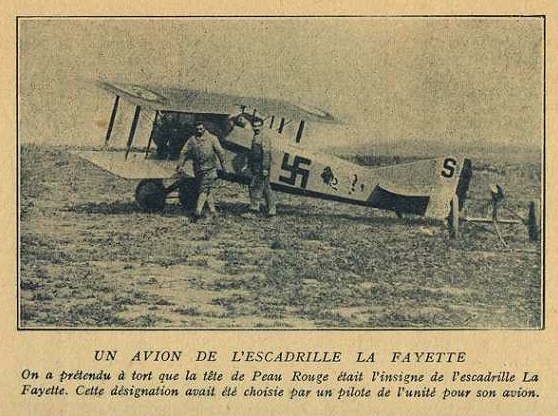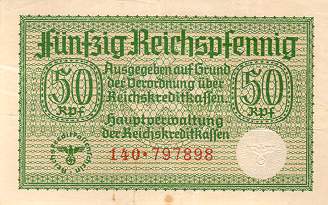Before WWI, one of America's leading propagandists
for government was Edward Bernays. Bernays openly sought to use
social psychology, political persuasion and advertising to construct
“necessary illusions” which were fed to the masses as “reality.”
Bernays described it as “engineering of consent.” The objective for
Bernays was to show government, government schools and government-regulated
media outlets how to gain control.
http://rexcurry.net/45th-infantry-division-swastika-sooner-soldiers.html
Edward Bernays' impact was similar to (and built upon) that
of America's most notorious and lasting propagandists for "Military
Socialism" and "National Socialism": Edward Bellamy and Francis Bellamy
(author of the "Pledge of Allegiance" in 1892). The "Pledge of Allegiance"
produced America's stiff-arm salute and robotic chanting to flags in
government's schools, where segregation was imposed by law, and racism
was taught as official policy. See the video at http://www.youtube.com/watch?v=BssWWZ3XEe4
In the United States and elsewhere, America's stiff-arm salute
began to spread outside of the Pledge of Allegiance to the flag. The
gesture was directed toward government officials who were often on stage
with the flag at mass meetings where the Pledge was led.
Bellamy's pledge was the origin of the stiff-arm salute adopted
later by the National Socialist German Workers Party, as shown in the
work of the symbologist Dr. Rex Curry (author of "Pledge of Allegiance
Secrets"). http://rexcurry.net/pledge-allegiance-pledge-allegiance2.jpg
By 1915,
National Socialism in the USA had inspired propagandistic presentations
of the American flag posed favorably with a swastika and the
phrase "May our glorious flag and this lucky star guide you and keep
you wherever you are." http://rexcurry.net/swastika-flag2.JPG
Another piece of propaganda from
the USA bears a swastika and the wording: "Lucky Star
- May this emblem protect you well from every bullet, every
shell." http://rexcurry.net/45th-infantry-protect-from-bullet-shell.jpg
In 1917, Edward Bernays and Walter Lippman helped Woodrow
Wilson break his campaign promises and con Americans into WWI. To
that end they used the Committee on Public Information (CPI
) also known as the Creel Committee. They helped Wilson
foment anti-German hate during WWI. Of course, WWI led to WWII and
so forth, ad infinitum, ad nauseum.
Bernays also created the patriotic war slogan “Make
the World Safe for Democracy” -a patriotic mantra that many stupid
Americans embraced just as they had earlier embraced Bellamy's "Pledge
of Allegiance," America's straight-arm gesture, and mechanical chanting
to flags in mass and on cue.
Bernays’ books "Crystallizing Public Opinion" (1923)
and "Propaganda" (1928) impressed Joseph Goebbels, the propaganda
minister for the National Socialist German Workers Party. Germany
mimicked American behavior because Goebbels learned from the behavior
of Bernays, President Wilson, and the U.S. government during World War
I. http://rexcurry.net/swastika3swastika.jpg
In 1933, Bernays met Karl von Weigand (a German journalist)
who informed Bernays that Goebbels was using Bernays' work for Goebbels'
propaganda campaigns fomenting hate, robotic chanting, straight-arm
salutes, the use of government schools, children, and more. http://rexcurry.net/swastika-nazi-sozi-goebbels.html
"If I approach the masses with reasoned arguments,
they will not understand me," Hitler noted in Mein Kampf, "In the
mass meeting, their reasoning power is paralysed. What I say is
like an order given under hypnosis."
To this day, laws continue to order children to hypnotically
chant in the Pledge of Allegiance ritual each morning in many schools
in the USA.
The gesture has changed.
|






























 On official badges, the Soviet Swastika was
yellow on a red background, mimicking the other socialist
symbol, the hammer and sickle http://rexcurry.net/swastika4.gif
(Russian: серп и молот, "serp i molot" (serpent
& mallet?)), a symbol that also developed
in the Russian Soviet Federated Socialist Republic
(RSFSR). Eventually, the national flag mimicked the same
color schemes and symbols. The swastika was even displayed
with the hammer and sickle http://rexcurry.net/swastika4.gif
as shown here http://rexcurry.net/ussr-socialist-swastika-may-day.jpg
On official badges, the Soviet Swastika was
yellow on a red background, mimicking the other socialist
symbol, the hammer and sickle http://rexcurry.net/swastika4.gif
(Russian: серп и молот, "serp i molot" (serpent
& mallet?)), a symbol that also developed
in the Russian Soviet Federated Socialist Republic
(RSFSR). Eventually, the national flag mimicked the same
color schemes and symbols. The swastika was even displayed
with the hammer and sickle http://rexcurry.net/swastika4.gif
as shown here http://rexcurry.net/ussr-socialist-swastika-may-day.jpg


















